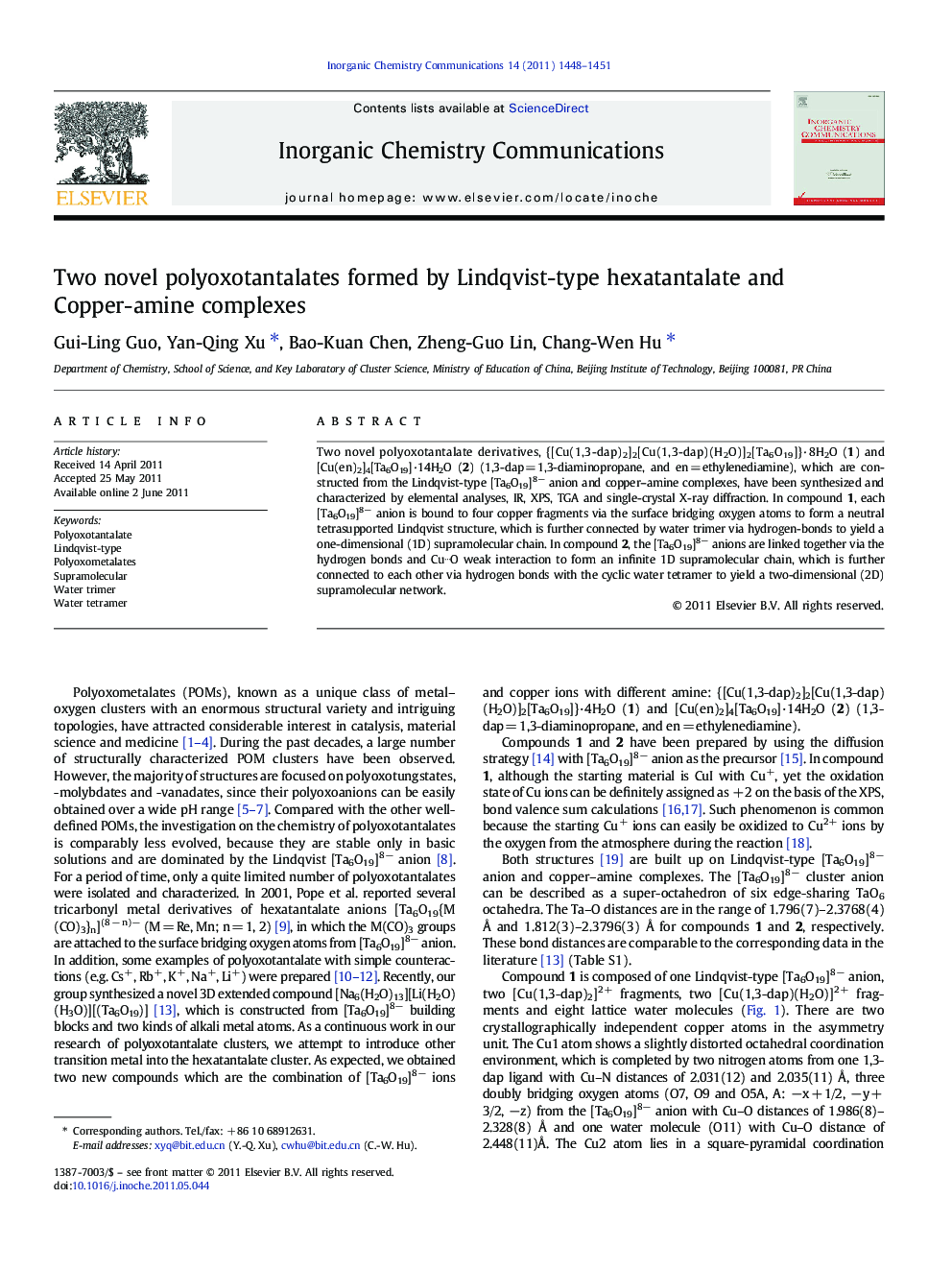| Article ID | Journal | Published Year | Pages | File Type |
|---|---|---|---|---|
| 1302562 | Inorganic Chemistry Communications | 2011 | 4 Pages |
Two novel polyoxotantalate derivatives, {[Cu(1,3-dap)2]2[Cu(1,3-dap)(H2O)]2[Ta6O19]}·8H2O (1) and [Cu(en)2]4[Ta6O19]·14H2O (2) (1,3-dap = 1,3-diaminopropane, and en = ethylenediamine), which are constructed from the Lindqvist-type [Ta6O19]8− anion and copper–amine complexes, have been synthesized and characterized by elemental analyses, IR, XPS, TGA and single-crystal X-ray diffraction. In compound 1, each [Ta6O19]8− anion is bound to four copper fragments via the surface bridging oxygen atoms to form a neutral tetrasupported Lindqvist structure, which is further connected by water trimer via hydrogen-bonds to yield a one-dimensional (1D) supramolecular chain. In compound 2, the [Ta6O19]8− anions are linked together via the hydrogen bonds and Cu⋯O weak interaction to form an infinite 1D supramolecular chain, which is further connected to each other via hydrogen bonds with the cyclic water tetramer to yield a two-dimensional (2D) supramolecular network.
Graphical abstractThe [Ta6O19]8− anions in 2 are connected by Cu⋯O weak interactions and extensive OH⋯O hydrogen-bonding interactions to form a 2D supramolecular network.Figure optionsDownload full-size imageDownload as PowerPoint slideResearch highlights► Transition metal complexes were first introduced into the system of polyoxotantalates. ► 1 represents the first hexatantalate coordinated with four copper–amine complexes. ► There exist water trimer and water tetramer in 1 and 2, respectively. ► There are extensive hydrogen bonds between water clusters and polyanions in 1 and 2.
